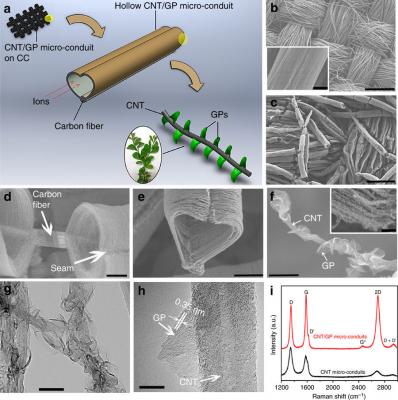Researchers from the UCLA, Mississippi State University, University of Nevada and China's Central South have designed an efficient and long-lasting graphene-based electrode for supercapacitors. The device’s design was inspired by the structure and function of leaves on tree branches, and it is said to be more than 10 times more efficient than other designs.

The electrode design reportedly provides the same amount of energy storage, and delivers as much power as similar electrodes, despite being much smaller and lighter. In experiments it produced 30% better capacitance — a device’s ability to store an electric charge — for its mass compared to the best available electrode made from similar carbon materials, and 30 times better capacitance per area. It also produced 10 times more power than other designs and retained 95% of its initial capacitance after more than 10,000 charging cycles.
Based on that, the researchers designed their electrode to maximize its surface area, creating the most possible space for it to attract electrons. They drew inspiration from the structure of trees, which are able to absorb ample amounts of carbon dioxide for photosynthesis because of the surface area of their leaves. We often find inspiration in nature, and plants have discovered the best way to absorb chemicals such as carbon dioxide from their environment, said the study’s principal investigator and a UCLA professor of mechanical and aerospace engineering. In this case, we used that idea but at a much, much smaller scale — about one-millionth the size, in fact.
To create the branch-and-leaves design, the researchers used two nanoscale structures composed of carbon atoms. The branches are arrays of hollow, cylindrical carbon nanotubes, about 20 to 30 nanometers in diameter; and the leaves are sharp-edged petal-like structures, about 100 nanometers wide, that are made of graphene. The leaves are then arranged on the perimeter of the nanotube stems. The leaf-like graphene petals also give the electrode stability.
The engineers then formed the structures into tunnel-shaped arrays, which the ions that transport the stored energy flow through with much less resistance between the electrolyte and the surface to deliver energy than they would if the electrode surfaces were flat.
The electrode also performs well in acidic conditions and high temperatures, both environments in which supercapacitors could be used.